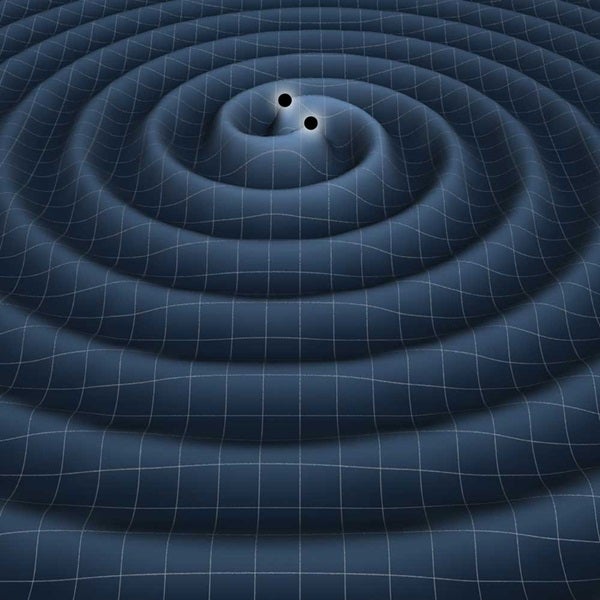“It’s pretty cool that a hundred years after Einstein proposed this theory, we’re still finding hidden gems,” said Barry McKernan from the American Museum of Natural History in New York.
Gravitational waves can be thought of like the sound waves emitted after an earthquake, but the source of the “tremors” in space are energetic events like supernovae (exploding stars), binary neutron stars (pairs of burned-out cores left behind when stars explode), or the mergers of black holes and neutron stars. Although scientists have long known about the existence of gravitational waves, they’ve never made direct observations but are attempting to do so through experiments on the ground and in space.
Part of the reason why detection is difficult is because the waves interact so weakly with matter. But McKernan and his colleagues suggest that gravitational waves could have more of an effect on matter than previously thought.
The new model shows that stars with oscillations — vibrations — that match the frequency of gravitational waves passing through them can resonate and absorb a large amount of energy from the ripples.
“It’s like if you have a spring that’s vibrating at a particular frequency and you hit it at the same frequency, you’ll make the oscillation stronger,” McKernan said. “The same thing applies with gravitational waves.”
If these stars absorb a large pulse of energy, they can be “pumped up” temporarily and made brighter than normal while they discharge the energy over time. This could provide scientists with another way to detect gravitational waves indirectly.
“You can think of stars as bars on a xylophone — they all have a different natural oscillation frequency,” said co-author Saavik Ford from the American Museum of Natural History.
“If you have two black holes merging with each other and emitting gravitational waves at a certain frequency, you’re only going to hit one of the bars on the xylophone at a time. But because the black holes decay as they come closer together, the frequency of the gravitational waves changes and you’ll hit a sequence of notes. So you’ll likely see the big stars lighting up first followed by smaller and smaller ones.”
The work also presents a different way to indirectly detect gravitational waves. From the perspective of a gravitational-wave detector on Earth or in space, when a star at the right frequency passes in front of an energetic source such as merging black holes, the detector will see a drop in the intensity of gravitational waves measured. In other words, stars — including our Sun — can eclipse background sources of gravitational waves.
“You usually think of stars as being eclipsed by something, not the other way around,” McKernan said.
The researchers will continue to study these predictions and try to determine how long it would take to observe these effects from a telescope or detector.










